38 organic food standards and labels the facts
Organic Production/Organic Food: Information Access Tools "'Organic' is a labeling term that denotes products produced under the authority of the Organic Foods Production Act. The principal guidelines for organic production are to use materials and practices that enhance the ecological balance of natural systems and that integrate the parts of the farming system into an ecological whole. organic food | Definition, Policies, & Impacts | Britannica organic food, fresh or processed food produced by organic farming methods. Organic food is grown without the use of synthetic chemicals, such as human-made pesticides and fertilizers, and does not contain genetically modified organisms (GMOs). Organic foods include fresh produce, meats, and dairy products as well as processed foods such as crackers, drinks, and frozen meals. The market for ...
Packaging and labelling | Food Standards Agency All food is subject to general food labelling requirements and any labelling provided must be accurate and not misleading. Certain foods are controlled by product specific regulations and they...

Organic food standards and labels the facts
Organic food - Wikipedia Organic food, ecological food or biological food are food and drinks produced by methods complying with the standards of organic farming. Standards vary worldwide, but organic farming features practices that cycle resources, promote ecological balance, and conserve biodiversity. Organic food and farming: scientific facts and consumer perceptions Organic production legislation requires that the organic label cannot be used on a food that requires a GM label. As a consequence, food with a GM ingredient could be labelled as organic if the GM percentage of that ingredient was less than 0.9%. 4. Healthfulness Organic Labeling | NSF Products labeled "organic" must contain at least 95% organically produced ingredients (excluding water and salt). Any remaining ingredients must consist of non-agricultural substances that appear on the NOP National List of Allowed and Prohibited Substances. Products meeting either of these labeling requirements may display these phrases ...
Organic food standards and labels the facts. Understanding the USDA Organic Label Organic products imported to the U.S. must comply with the USDA organic regulations or be certified to an equivalent international standard, meet U.S. labeling requirements, and maintain organic integrity during the import process. If your product is not certified to one of these standards, you must not make any organic claim on the principal display panel or use the USDA organic seal anywhere on the package. What Makes A Food Product Organic and Healthy? - How To Ripe Organochlorine pesticides can, in fact, be transferred to your unborn kid during pregnancy. If that occurs, it disrupts crucial brain development, which can result in learning impairments and other neurological issues. We all don't want it to happen to our kids. However, processed food isn't the only risk. inspection.canada.ca › food-labels › labellingFood labelling for industry - Canadian Food Inspection Agency The Industry Labelling Tool is the food labelling reference for all food inspectors and stakeholders in Canada. It replaces the Guide to Food Labelling and Advertising, and the Decisions page to provide consolidated, reorganized and expanded labelling information. This tool provides information on: Labeling Organic Products | Agricultural Marketing Service All instances of specific fibers in finished product are certified organic: label may claim the specific fibers are organic and identify the percentage of organic fibers; Global Organic Textile Standard (GOTS): textiles that meet this standard may be sold as organic in the United States. Textiles: Unless the finished product is certified to the USDA organic regulations, product labels may not state or imply that the finished product is USDA organic or use the USDA organic seal.
All About Organic Foods | Food Safety and Health · We share the relevant. You must look at package labels and watch for signs in the supermarket. Along with the national organic standards, USDA developed strict labeling rules to help consumers know the exact organic content of the food they buy. The USDA Organic seal also tells you that a product is at least 95 percent organic. Single-ingredient foods Organic 101: What the USDA Organic Label Means | USDA USDA certified organic foods are grown and processed according to federal guidelines addressing, among many factors, soil quality, animal raising practices, pest and weed control, and use of additives. Organic producers rely on natural substances and physical, mechanical, or biologically based farming methods to the fullest extent possible. The EU's organic food market: facts and rules (infographic) The EU's organic logo on food products guarantees that EU rules on organic production have been respected. It is compulsory for pre-packaged food. In the case of processed food, it means that at least 95% of the ingredients of agricultural origin are organic. Super markets and other retailers can label their products with the term organic only if they comply with the rules. en.wikipedia.org › wiki › Food_energyFood energy - Wikipedia Many governments require food manufacturers to label the energy content of their products, to help consumers control their energy intake. To facilitate evaluation by consumers, food energy values (and other nutritional properties) in package labels or tables are often quoted for convenient amounts of the food, rather than per gram or kilogram; such as in "calories per serving" or "kcal per 100 ...
› national-organic-programNational Organic Program | Agricultural Marketing Service National Organic Program NOP is a federal regulatory program that develops and enforces consistent national standards for organically produced agricultural products sold in the United States. NOP also accredits third-party organizations to certify that farms and businesses meet the national organic standards. Organic on Food Labels | FDA Organic on Food Labels FDA does not regulate the use of the term "organic" on food labels. The National Organic Program (NOP) is the federal regulatory framework governing organically produced... Organic Foods: What You Need to Know - HelpGuide.org If you can afford to pay the higher prices, look for beef and dairy products labeled "pasture raised" or "100% grass fed." For pork, chicken, or eggs, look for a "certified organic" label. You may find that buying cheaper cuts of meat from organically raised animals enables you to eat organic without breaking your food budget. Organic foods: Are they safer? More nutritious? - Mayo Clinic The USDA guidelines describe organic foods on product labels as: 100% organic. This label is used on certified organic fruits, vegetables, eggs, meat or other foods that have one ingredient. It may also be used on food items with many ingredients if all the items are certified organic, except for salt and water. These may have a USDA seal. Organic.
Food Labeling & Nutrition | FDA Food labeling is required for most prepared foods, such as breads, cereals, canned and frozen foods, snacks, desserts, drinks, etc. Nutrition labeling for raw produce (fruits and vegetables) and ...
Organic claims on food labels - Canadian Food Inspection Agency Products with 70-95% organic content must declare the percentage of organic content on their label. Products with less than 70% organic content may only indicate which ingredients are organic in the ingredients list. Use of the organic logo on organic products. The CFIA regulates the use of the Canada organic logo below (Figure 1).
Organic food: labelling and advertising rules - GOV.UK When you can label your product as 'organic' You can only label foods as 'organic', or use terms relating to organic production methods, if: at least 95% of the product's agricultural ingredients...
Organic Food Statistics About the 2020 Market (Infographic) - HealthCareers 5. Understanding the meaning behind different organic labels is crucial. (FamilyDoctor) Before you switch, remember one of the most important facts about organic food: know your labels. "100% organic" means the food has been grown and processed using FDA-approved methods and ingredients.
› Cascadian-Farm-Organic-GranolaCascadian Farm Organic Granola Bars, Chocolate Chip Chewy ... And, of course, this bar is processed food, which is never truly healthy, no matter what the label says. These are the nutrition facts: Total Fat 3.5 g Total Carbs 25 g (1 g fiber) (Sugars 12 g) Protein 2 g Here is a list of the positives of this bar: The ingredients are organic. It contains whole grains. There are no hydrogenated fats in it.
Organic Certification Requirements and the USDA Organic Standards The National Organic Program (NOP), part of USDA's Agricultural Marketing Service (AMS), oversees and enforces the integrity of the rigorous USDA organic standards and the accreditation of organic certifiers. Organic is one of the most heavily regulated and closely monitored food systems in the U.S. Prescriptive regulations cover the growing, handling, and processing of organic fresh produce ...
Organic Food | FAQs | The Food Safety Authority of Ireland - FSAI General food safety and labelling requirements that apply to non-organic food apply equally to organic foodstuffs. Along with specific requirements such as a list of ingredients, food allergen labelling, etc., labelling must not mislead the consumer. Read DAFM guidance on organic farming Last reviewed: 17/5/2017
Difference Between Organic and Natural Food | Organic Facts Organic food: Organic labels have legal implications. A manufacturer must follow the specified rules and regulations before using the organic label. Natural food: Natural labels are normally used freely by manufacturers due to lack of adequate guidelines. Food Demand. Organic food: There is considerably more for organic food than for natural ...
Food Labeling | Agriculture and Markets This is a brief summary of the labeling regulations governing foods offered for sale in New York State. It is not meant to be all inclusive of all of the labeling requirements. It is strongly suggested that labels be submitted to this agency for review prior to printing. Next Section Five Basic Label Requirements Five Basic Label Requirements
Food Standards and Labeling Policy Book | Food Safety and Inspection ... Food Standards and Labeling Policy Book. Guideline ID FSIS-GD-2005-0003. Issue Date August 2005. Full Guideline. View the Food Standards and Labeling Policy Book. The guidance provides examples of meat and poultry product label labels that are true and not misleading. Additionally, claims and statements. Additionally, meat and poultry product ...
› 365-Everyday-Value-Organic-Tahini365 by Whole Foods Market, Tahini Organic, 16 Ounce Whole grains, fair trade coffee, organic milk, frozen veggies and so much more, all flexing with our unmatched Whole Foods Market Quality Standards. Product Description Our standards are what set us apart, and our quality is what keeps us stocking pantries, fridges and freezers with the best natural and organic 365 products every day.
What Does Organic Mean? The Facts about Organic Food Standards and Labels Only food labeled "organic" has been certified as meeting USDA organic standards. For more detailed information on the USDA organic standards, visit the USDA National Organic Program website. or call the National Organic Program at 202-720-3252, or write USDA-AMS-TM-NOP, Room 4008 S. Bldg., Ag Stop 0268, 1400 Independence, SW, Washington, DC 20250.
Food Labeling - USDA The National Organic Program (NOP), a regulatory program housed within the USDA Agricultural Marketing Service, develops organic food labeling standards Other agencies involved in the regulation of specific labels include the Alcohol and Tobacco Tax and Trade Bureau within the Department of the Treasury, which governs alcohol labels, and the ...
Food Labelling | FAO | Food and Agriculture Organization of the United ... Food labels convey information about the product's identity and contents, and on how to handle, prepare and consume it safely. With the increase in global trade and a shift away from the traditional face-to-face food producer and buyer relationship, there is a greater need to create food labels that are clear and can be trusted.
Organic Labeling | NSF Products labeled "organic" must contain at least 95% organically produced ingredients (excluding water and salt). Any remaining ingredients must consist of non-agricultural substances that appear on the NOP National List of Allowed and Prohibited Substances. Products meeting either of these labeling requirements may display these phrases ...
Organic food and farming: scientific facts and consumer perceptions Organic production legislation requires that the organic label cannot be used on a food that requires a GM label. As a consequence, food with a GM ingredient could be labelled as organic if the GM percentage of that ingredient was less than 0.9%. 4. Healthfulness
Organic food - Wikipedia Organic food, ecological food or biological food are food and drinks produced by methods complying with the standards of organic farming. Standards vary worldwide, but organic farming features practices that cycle resources, promote ecological balance, and conserve biodiversity.


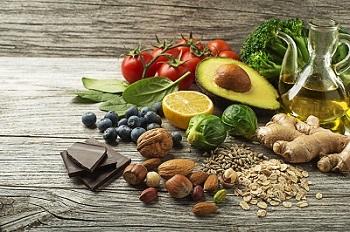

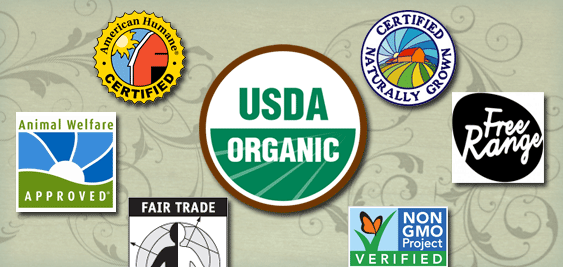



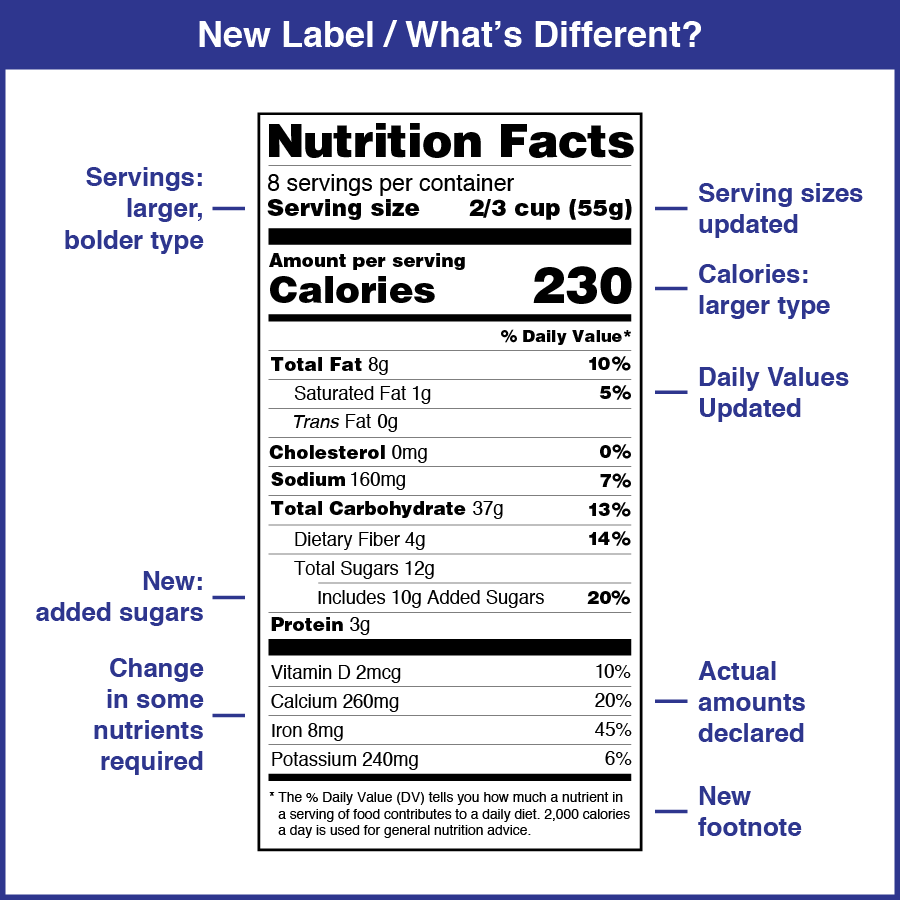


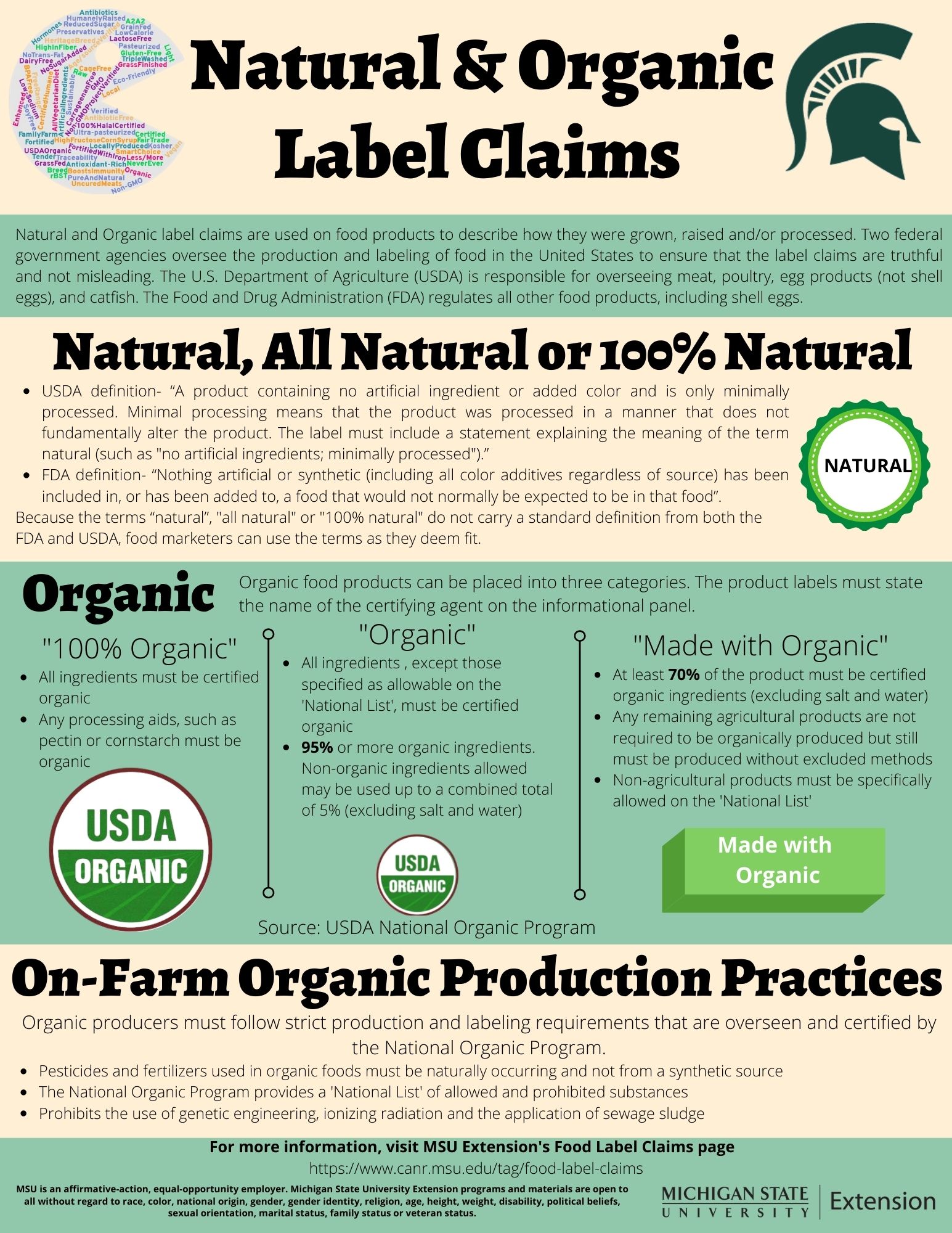




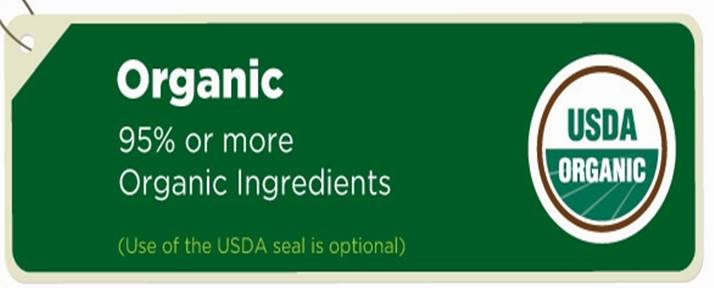


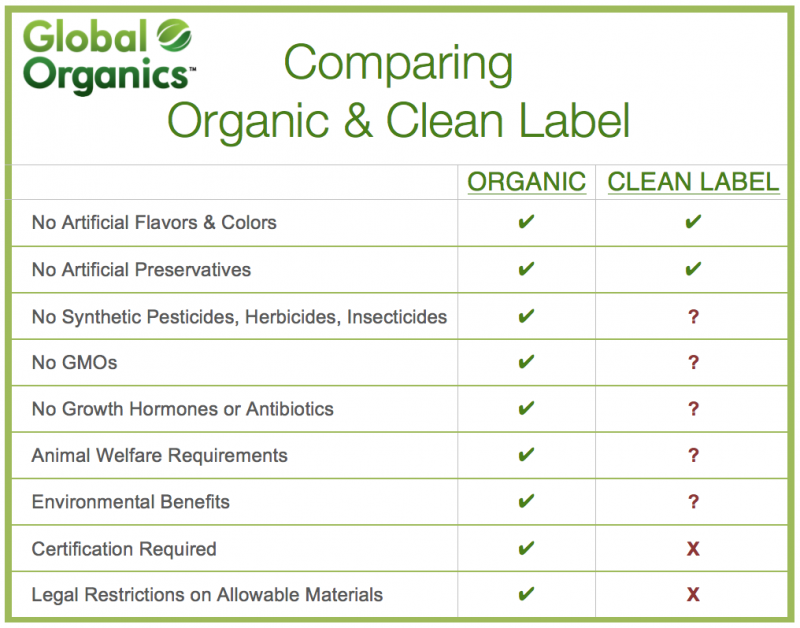

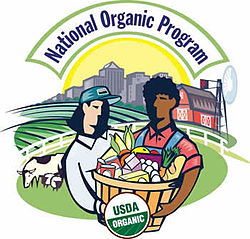
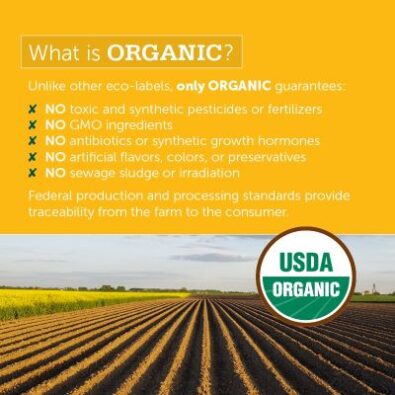



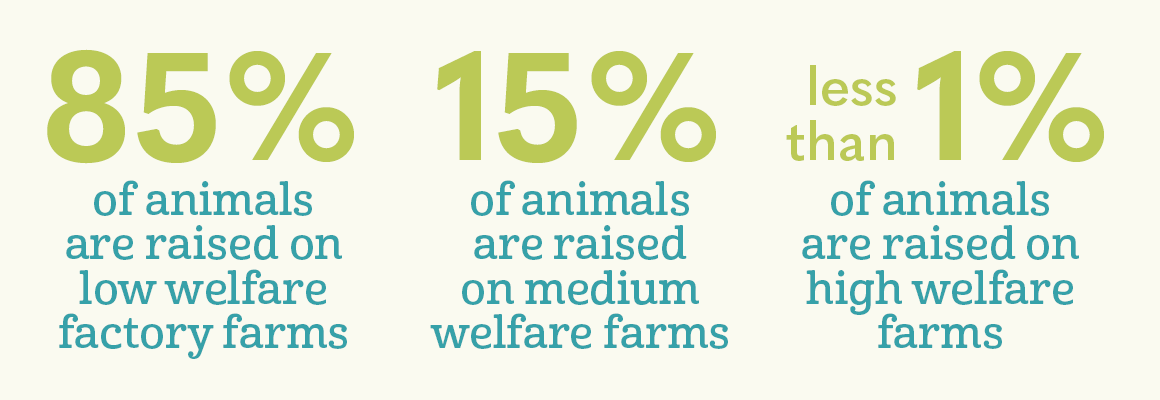


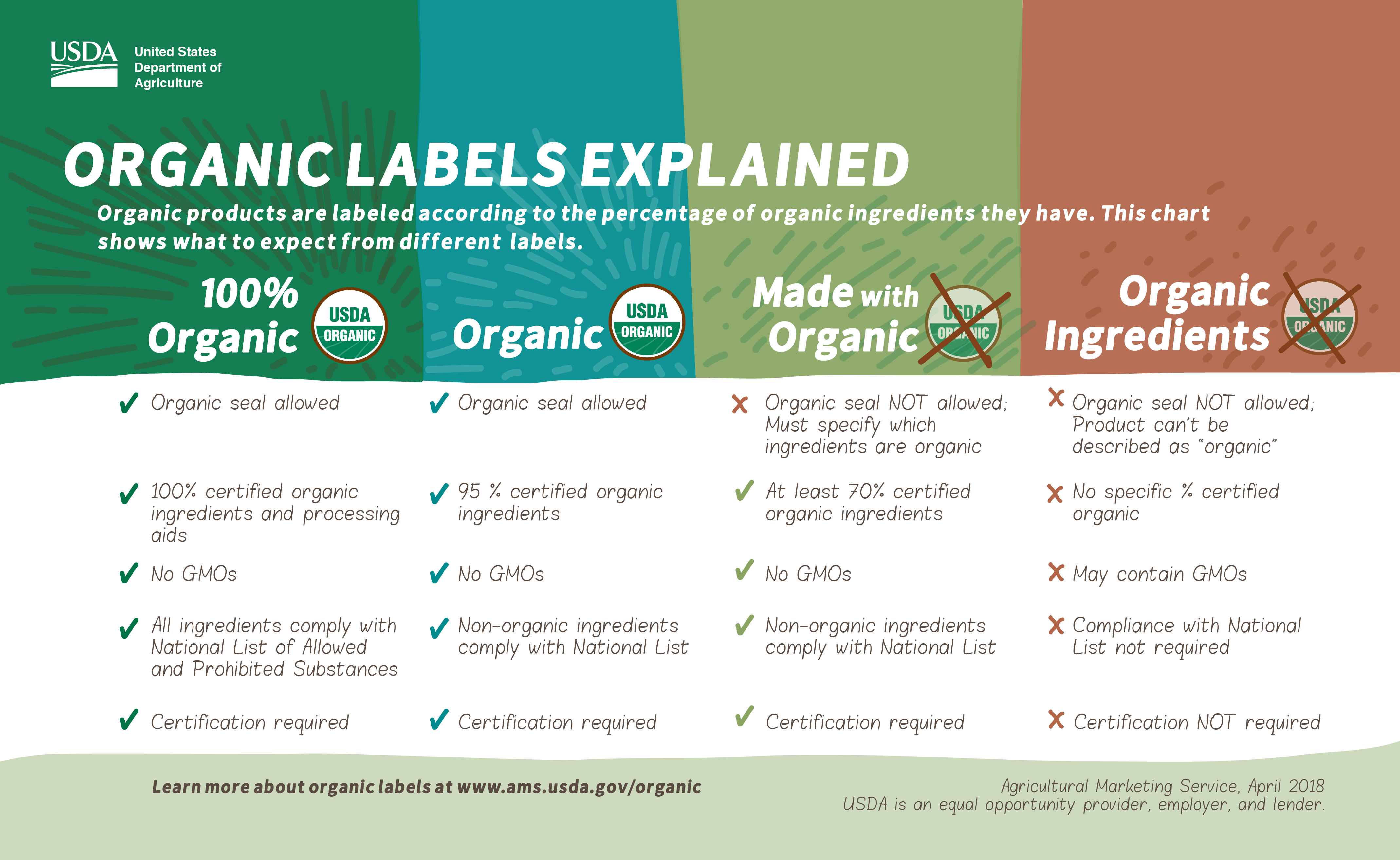




Post a Comment for "38 organic food standards and labels the facts"